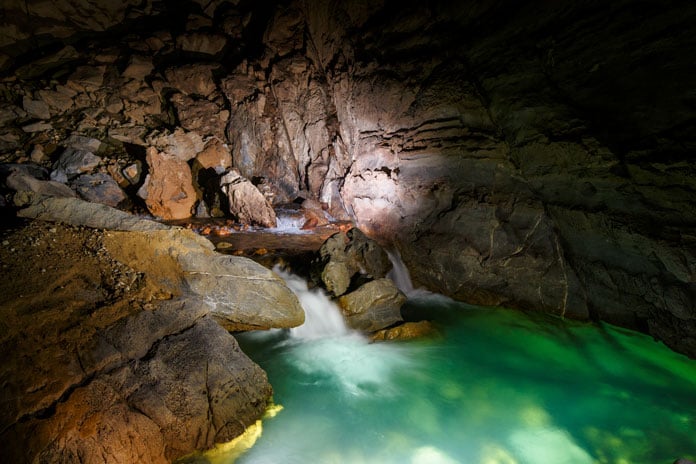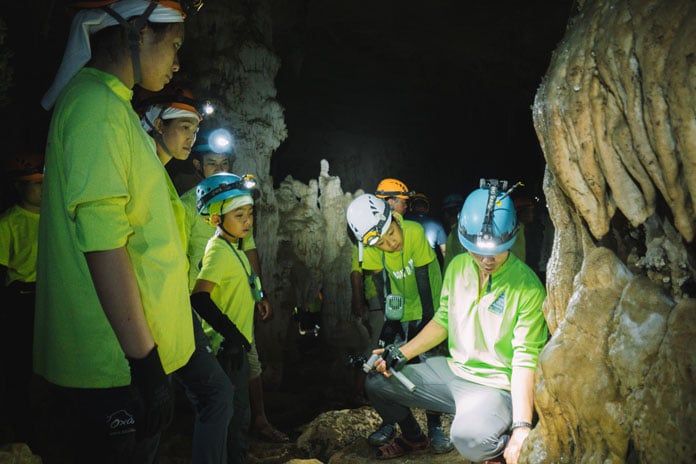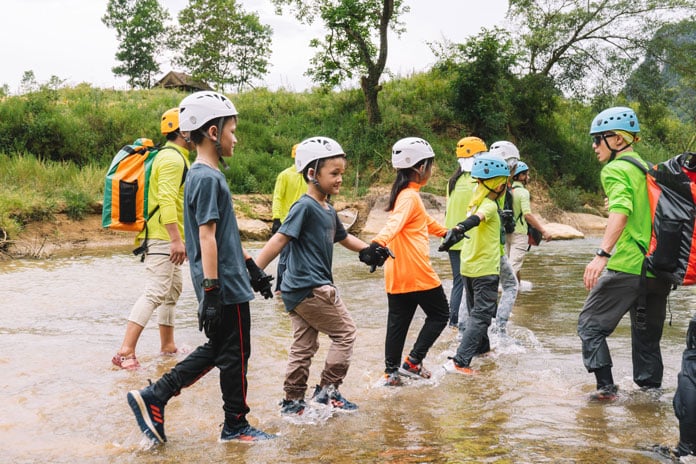River crossings form part of many Oxalis tours, they form part of the highlights of the trip and are exciting and fun. In normal water levels river crossings present a lower risk, however, in higher water levels the hazards and risk increases. Always consider additional safety measures in high water such as the use of boats, alternative dry routes and the use of throw bags.
Guides must have sufficient confidence and knowledge to ensure they are able to safely lead trips involving river crossings particularly in higher water levels. The following information is to assist the guide for higher water levels and assisting others.
In low water levels buoyancy jackets are not necessary. A judgement must be made as to when they are worn and buoyancy aids must be worn in high water levels particularly where the risk of being swept off your feet exists.
There are many variables that can affect river crossings
Water depth
The depth of water will be a limiting factor and needs to be determined prior to attempting a crossing. As a general rule the depth of water that can be crossed will be to the height of the buoyancy jacket as it will then start to lift the person off their feet.
Water speed
Water velocity has a significant effect on the ability to cross water and can easily wash people off their feet.
It is important to remember that if the speed of water doubles the force on the legs is quadrupled (square law).
River obstacles
The river bed will present a number of obstacles such as boulders, slippery cobbles, silt, vegetation and strainers. This problem is increased when the visibility is poor as any obstacle cannot be seen.
Prior to entering the water, the guide must ensure everyone has been briefed and safety measures put in place. This will include location of throw bags, areas to swim to.
A visual check upstream must be made before crossing for any debris floating downstream. Downstream safety must be in place and as a minimum include a safety assistant with a throw bag.
Consideration must be given to the river features downstream and the ability to swim to shore if someone is washed away. In particular eddies should be identified and everyone made aware of where to swim should they be swept away A safe location to enter and exit the river must be identified.
There are a number of techniques that can be adopted for river crossings depending on the depth and confidence of the group.
Individual
This can be completed in lower water levels. Where possible start upstream and walk at an angle across the river to a downstream exit. This technique allows the water to push you across and is generally more stable than trying to walk upstream.
A safety assistant must always be positioned downstream to supervise.
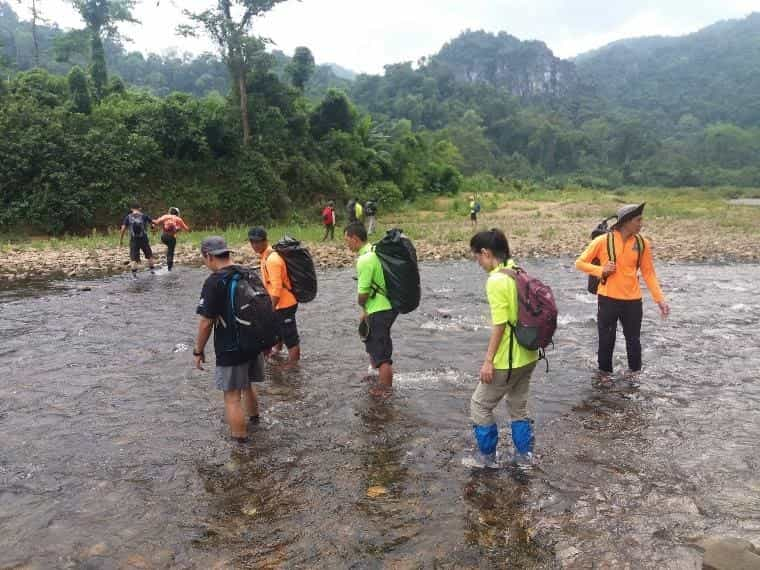
Before crossing, always look upstream.
Moving water will impart pressure on the upstream side of your legs. This will also create a small eddy on the downstream side of the legs.
The safety assistant should always stand upstream when providing assistance on a river crossing. This allows the eddy produced by their legs to provide a calmer area for those needing assistance.
Line abreast
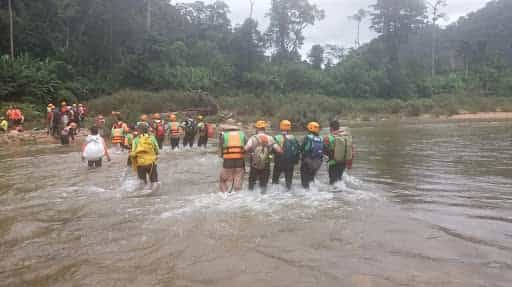
In lower energy water this technique may be considered. Face the direction of travel. The person upstream should be the most experienced and strongest person as they take the force of water. This creates an eddy for other team members. The Use of a pole will assist or link arms.
Lines for river crossings.
River crossings may be assisted with the use of a line across the river. The line can be used for support as a handline or with a sling and karabiner to float across if swept off your feet.
The line must never be angled at 90° to the current. It must be angled with the downstream end at a suitable exit point and must be releasable.
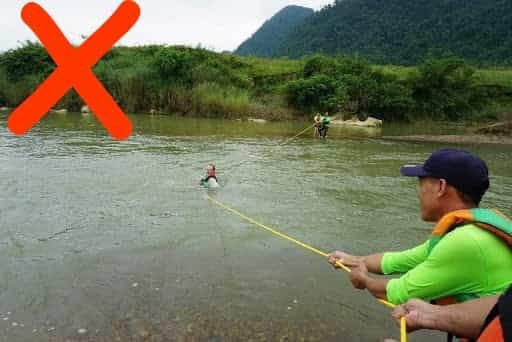
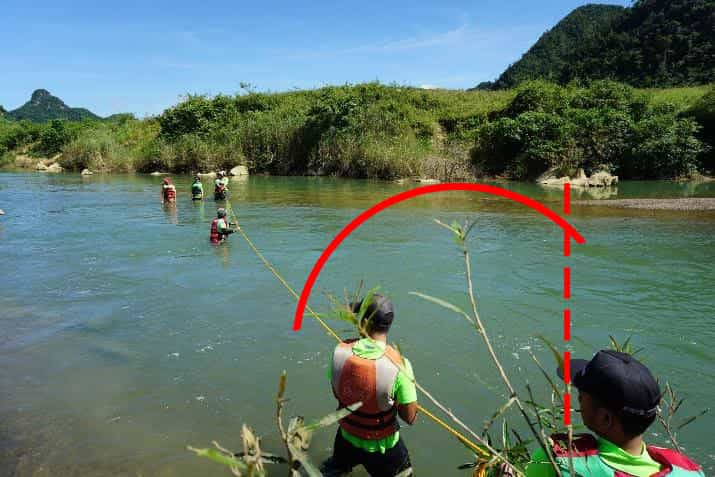
Whether you prefer long treks, camping in a cave, sleeping under the stars in the jungle, swimming underground in river caves, explore the huge dry caves or just taking an exploratory day trip, Oxalis Adventure Tours can provide the right amount of adventure just for you.



__637051765075307793.jpg)
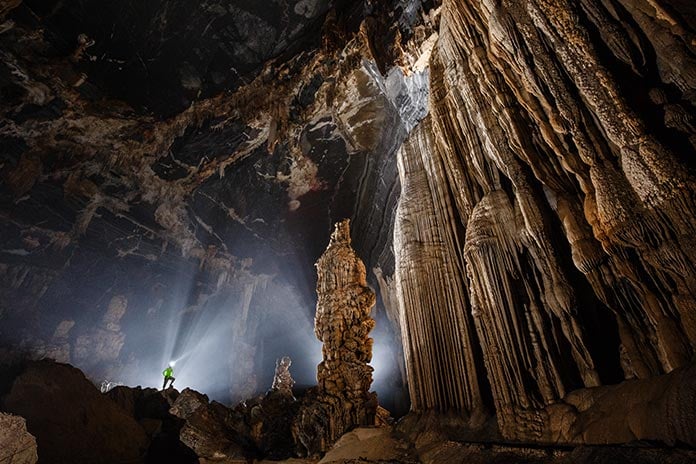
__637051782550081035.jpg)
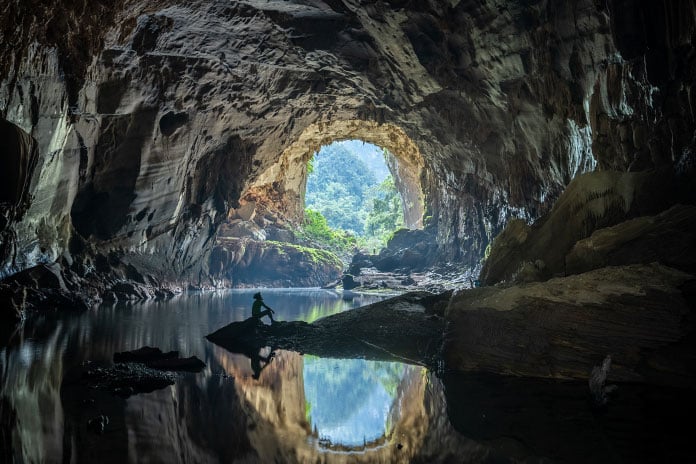
__637051777074859032.jpg)
__637051780703588520.jpg)
__637051781488596056.jpg)
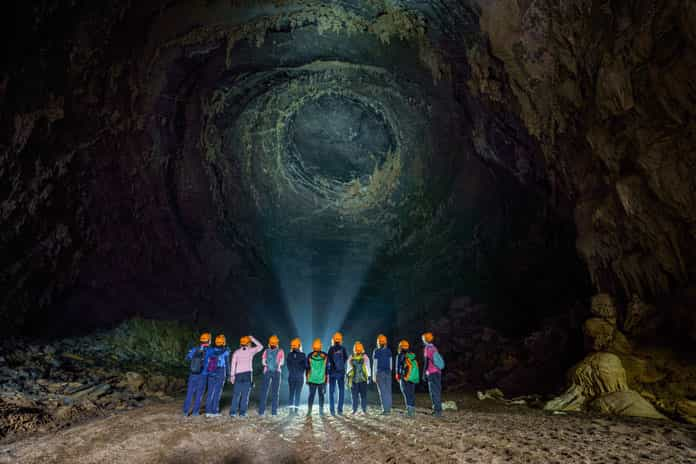
__637051767008903435.jpg)
__637051774329206026.jpg)
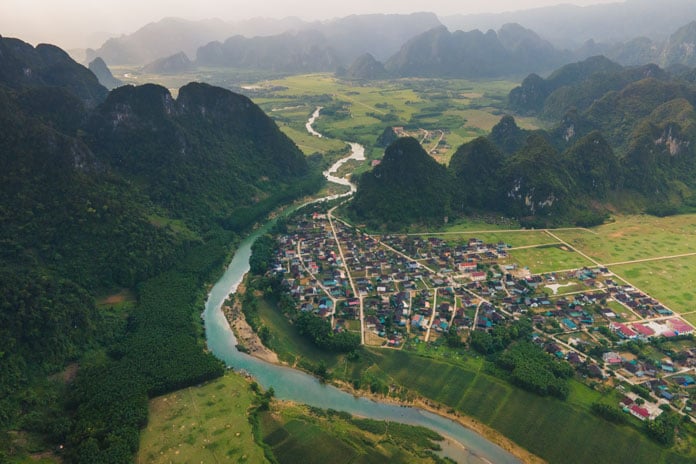
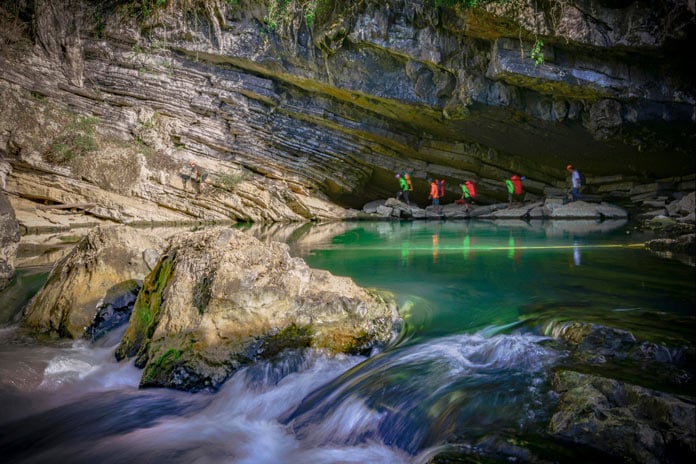
__637740499994967442.jpg)
